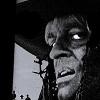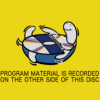| Welcome, Guest |
You have to register before you can post on our site.
|
| Forum Statistics |
» Members: 5,965
» Latest member: MF3001
» Forum threads: 6,034
» Forum posts: 86,373
Full Statistics
|
| Latest Threads |
25fps to 24fps software t...
Forum: Audio and video editing
Last Post: emy54
5 hours ago
» Replies: 63
» Views: 68,168
|
Once Upon a Time in the W...
Forum: Released
Last Post: Stamper
5 hours ago
» Replies: 6
» Views: 1,228
|
The Matrix UHD regraded t...
Forum: In progress
Last Post: emy54
8 hours ago
» Replies: 3
» Views: 121
|
LaserDisc Commentaries NO...
Forum: Official and unofficial releases
Last Post: ustabora
Yesterday, 11:59 PM
» Replies: 37
» Views: 45,895
|
Superman (1978) - Isolate...
Forum: Released
Last Post: velocity
Yesterday, 11:42 PM
» Replies: 2
» Views: 1,302
|
Titanic (1997) Cinema DTS
Forum: Requests, proposals, help
Last Post: emy54
Yesterday, 09:49 PM
» Replies: 0
» Views: 39
|
stwd4nder2 Audio Syncs
Forum: Released
Last Post: emy54
Yesterday, 09:22 PM
» Replies: 87
» Views: 67,583
|
Hi everyone!
Forum: Presentation
Last Post: emy54
Yesterday, 09:02 PM
» Replies: 0
» Views: 33
|
Fear of A Black Hat
Forum: Capture and rip
Last Post: Russ3dp
Yesterday, 08:48 PM
» Replies: 0
» Views: 36
|
Hi Everyone
Forum: Presentation
Last Post: Russ3dp
Yesterday, 08:25 PM
» Replies: 0
» Views: 27
|
|
|
 Early Bond mono preservations
Early Bond mono preservations |
|
Posted by: pipefan413 - 2019-11-21, 03:17 PM - Forum: Requests, proposals, help
- Replies (9)
|
 |
Depending on what's already been done and what others have available, I guess this could be seen as a request first and a proposal second.
Like many European discs, the UK Blu-ray releases of the early Bond films are filled up with foreign language dubs and do not include the original English mono, instead choosing to feature the 5.1 remix exclusively. This is rather frustrating for those of us who prefer to hear the original mix, particularly since the films were made here in the first place.
I notice that the US Blu-rays do feature the original mono, though only in low-bitrate Dolby Digital (AC3) as opposed to something like uncompressed LPCM. The old US Criterion Collection LaserDiscs also appear to feature the original mono mixes, although they are not entirely straightforward to source from because they add a Criterion logo and an alternative MGM logo at the beginning instead of the MGM lion seen on the Blu-rays (therefore the lion roar does not exist on the LaserDisc audio). Syncing it to the Blu-ray video would presumably be straightforward enough apart from having to source the lion roar from somewhere else and disguising the transition between the two sources.
Here are the big priorities, and the ones I could possibly do myself using Criterion LaserDisc sources if I could work out the lion problem:
Dr. No (1962)
From Russia With Love (1963)
Goldfinger (1964)
Ideally, I'd also like the following:
Thunderball (1965)
Thankfully, The Aluminum Falcon has already done a restoration of On Her Majesty's Secret Service including the original mono from LaserDisc in LPCM. From memory, I don't think the colours are quite as horrible in the first four films, so I'm really just concerned with restoring the original mono audio for them in the best quality possible.
Does anyone have such a thing already, or is anyone willing and able to do it? If not, I'm probably either going to try a LaserDisc resync myself or simply import the US Blu-rays with the lossy Dolby Digital tracks.
EDIT: I've just realised that I could source the lion roar from Aluminum Falcon's OHMSS restoration, so that might be enough for me to do the first three films. However, I've also noticed that the LaserDisc tracks I have aren't actually LPCM because they've been repurposed for DVD as Dolby Digital. Presumably, they're therefore not significantly better than the Dolby Digital mono tracks on the US Blu-ray Discs. Perhaps importing from the US is the answer here. I was really hoping to avoid buying these films for something like the fourth time...
|

|
|
| Black Christmas 2006 Unrated |
|
Posted by: alleycat - 2019-11-20, 10:00 AM - Forum: Requests, proposals, help
- No Replies
|
 |
I was reading about this, apparently the only way to get a HD version of the Unrated Cut is from the HD DVD, every blu ray release has been the R Rated version. Does anyone have the HD DVD and the ability to rip it? I'm happy to rebuild it as a blu ray if someone can provide it.
|

|
|
 Mighty Max (Cartoon 1993–1995)
Mighty Max (Cartoon 1993–1995) |
|
Posted by: marin888 - 2019-11-18, 04:50 AM - Forum: Movies, TV shows and other
- Replies (3)
|
 |
Mighty Max (Cartoon 1993–1995)
Epic cartoon which is not yet released on DVD... But...
Small clip with TCR - property of studiocanal
http://www.mediatoon-distribution.com/en...ighty-max/
Quote from Studiocanal:
We do have Home video rights for this series in the USA.
With some ''Magic'' it finally could be out.....
-----------------------------------------------------------------------------------------------------
Before the rights for this show was all messed up, and even at that time, Shout Factory couldn't get them.
Only a few ep's was released on VHS,
and what is available for now are pooooor vhs Rip - dcoy complete avi
+
Mighty Max better quality S01 (incomplete) mkv - 2, 3, 8, and 12 are missing (spleen)
+
uncompressed TV-VHS transfer - heavily used/old vhs (spleen)
Mighty Max - 1x11 - "Werewolves of Dunneglen"
Mighty Max - 1x12 - "Out in the Cold"
Mighty Max - 1x13 - "The Maxnificent Seven"
Mighty Max - 2x02 - "Pandora's Box, part 2"
Mighty Max - 2x03 - "Blood of the Dragon"
Mighty Max - 2x01 - "Pandora's Box, part 1"
Mighty Max - 2x13 - "Clown Without Pity"
Mighty Max - 2x14 - "Max vs. Max"
And another fella:
Mighty Max Restoration Project
https://www.youtube.com/channel/UCeLNxwZ...aZg/videos
https://www.tapatalk.com/groups/mightyma...-t640.html
His approach to restore them is wrong [heavily filtered] - not tasteful at all, too bad.
Mighty Max Production Cel Set-Up (Film Roman, 1993)
![[Image: Dhf8pFX.jpg]](https://i.imgur.com/Dhf8pFX.jpg)
|

|
|
| Getting Two Audio Files to Sync |
|
Posted by: Lio - 2019-11-12, 04:48 AM - Forum: Audio and video editing
- Replies (3)
|
 |
Okay, here's a tricky one. I have two copies of the same music recording from Harry Potter 3. One copy has a different instrument mixed in that I'd like to isolate as much as possible. To do that I first need to line the two recordings up pretty much exactly. The mixing between the two is different so comparing the waveforms isn't really an option.
After playing with it the past couple of days in Audacity, I've gotten it very close to syncing (I lined it up via an audio glitch about 21 seconds in) but am just off by a little. I opened my result up in RX7 and made an interesting discovery:
You can see there's some sort of filter-sweep type thing. The shape of it confuses me. Does this mean that one of the files is running slightly faster than the other, and that the area 20 seconds in is where the two files are "meeting" before going out of sync again?
I can PM anyone the Audacity file to anyone who's interested, or I can post it here if that's allowed. Thanks for any insight.
|

|
|
| Highlander - The French Theatrical Cut - Preservation |
|
Posted by: HippieDalek - 2019-11-09, 11:08 PM - Forum: Released
- Replies (18)
|
 |
After my recent Highlander 2 European Cut preservation, and williarob's excellent Highlander US Theatrical preservation, I thought I'd have a go at bringing the often overlooked French Theatrical Cut of the original Highlander into the world of HD...and English!
Released just a few weeks after the US Theatrical Cut, the French Theatrical version is very similar; most of the cuts made to the US version are here, but it's already a little closer to the full length European Cut which would be released a few months later. The extra wrestling shots and the Bedsoe scene have already gone by this version, and many of the shots have been trimmed or extended by a few frames here and there. The biggest change in comparison to the US Cut is that this version retains the WWII flashback sequence, so Rachel's character makes a bit more sense here. This also features the first appearance of the "enhanced" final quickening which features different effects to the US Theatrical Cut. This would go on to be the version seen in all later cuts of the film.
This cut can still be bought in France on DVD, and as far as I know has never gone out of print, but it has only ever been available in Standard Definition and dubbed into French.
For this preservation I used the video from the 30th Anniversary Blu Ray, and the audio from the US Theatrical Cut laserdisc to recreate this version in full HD. I used the most recent French DVD as a guide for both the editing and the audio. Obviously English language audio has never existed for this cut, but the US audio is almost identical so it fits quite well.
I also used the original UK Blu Ray to patch the opening shot of the wrestlers walking through the tunnel (this has been trimmed by 9 frames on the 30th Anniversary Blu Ray), and upscaled the end credits from the French DVD (both the US and French Cut feature small differences in the end credits in comparison to the European Cut). I also used the French DVD to patch a small piece of missing audio from the US Theatrical Cut.
![[Image: ChuDbgo.jpg]](https://i.imgur.com/ChuDbgo.jpg)
I've included the original French audio on a second track. It may be of interest to some as it features Christopher Lambert dubbing himself back into his native language.
This is more of a curiosity for the hardcore Highlander film, but I hope some of you enjoy it. PM me for the link.
![[Image: L3Y17bh.jpg]](https://i.imgur.com/L3Y17bh.jpg)
|

|
|
|